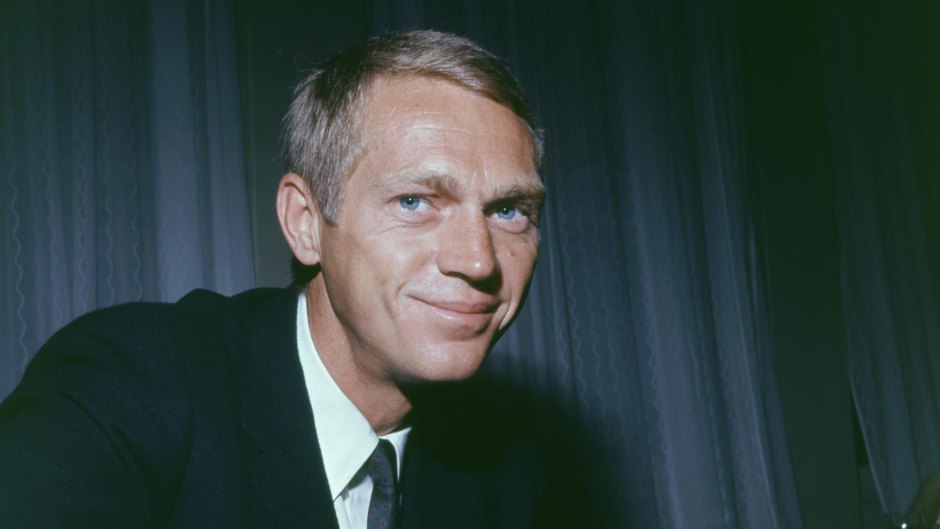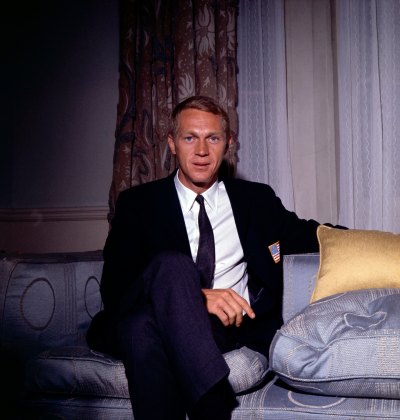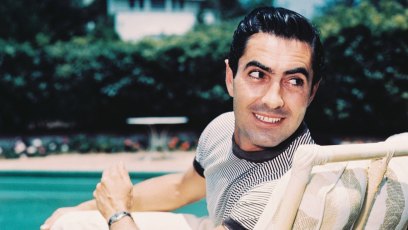
United Artists/Kobal/Shutterstock
Steve McQueen ‘Lived on the Street’ Before Becoming a Movie Star: Inside His Childhood
In 1972, police in Anchorage, Alaska, arrested Steve McQueen for speeding and doing doughnuts in a rented Oldsmobile Toronado. “He really raised hell for quite a while,” said witness Lynn Burlingame. “When they did finally get him stopped, they administered a field sobriety test and he somersaulted down the white line.” His mug shot shows a disheveled Steve smirking and flashing the peace sign.
In his younger years, the actor had known plenty of real trouble, so he shrugged off his Alaskan misadventure as a lark. And he had a point. Predictably, the world’s biggest movie star was released on bail that night. Steve fled the state and was eventually convicted in absentia of reckless driving.

For a generation of movie lovers in the ’60s and ’70s, Steve was the ‘King of Cool’ who made a career out of playing nonconformist underdogs who became heroes by unexpectedly rising to the occasion. These portrayals came from an honest place. The odds were also stacked against Terrence Stephen McQueen when he was born to a 20-year-old single mother in Beech Grove, Indiana, in 1930, yet he succeeded beyond anyone’s expectations. “When I did The Great Escape, I kept thinking, if they were making a movie of my life, that’s what they’d call it — the great escape,” he confessed in 1963.
Before Steve’s first birthday, his father, a reservist in the Marines, left Steve’s mother, Julia Ann. She handed off the baby to her parents, but when the Great Depression sapped their resources, Steve was sent to live with his great-uncle Claude, a prosperous hog farmer. “When I’d get lazy and duck my chores, Claude would warm my backside with a hickory switch. I learned a simple fact: You work hard for what you get,” said Steve. “He was a good man.”
Little Steve would probably have been happy growing up on the farm, but Julia Ann sent for her son whenever she settled down. Unfortunately, she was never able to give him a stable, happy home.
“His mother’s promises always turned out to be empty,” Marshall Terrill, author of Steve McQueen: The Life and Legend of a Hollywood Icon and Steve McQueen: In His Own Words, tells Closer. “He was forced to endure a succession of Julia Ann’s boyfriends and lovers. They ranged the full spectrum from completely apathetic toward Steve to simply abusive.”
Hal Berri, his mother’s first husband, was one of the worst. Steve went to live with them in L.A. when he was 7. “He apparently beat me for the sheer sadistic pleasure it gave him,” Steve recalled. “I was young. I even thought of bearing the beatings, vowing simply to hold on until I was old enough to run away. But I just couldn’t. It wasn’t in me. I just started fighting back.”
His attempts to return Berri’s violence resulted in harsh punishments. “He claimed that Berri tossed him into a dark room without food or water for hours,” says Terrill.
To avoid going home, Steve wandered the city and started getting into trouble for petty theft and mischief. “He would live on the street for weeks at a time,” says Terrill. “He found an outlet for all of his frustrations and hostilities by stealing cars, shooting pool and thumbing his nose at law enforcement.”
After several scrapes with the law, Julia Ann remanded her 14-year-old son to Boys Republic, a California reform school, in 1945. “It’s probably the best thing that ever happened to me. They straightened me out,” admitted Steve, who lived there for a year.
At 17, Steve enlisted in the Marines. Though his individualism got him in trouble — he spent time in the brig for going AWOL — service taught him discipline and opened a new path. He moved to New York in the early 1950s and began studying acting at the suggestion of a girlfriend. “I started going to night school on the GI thing, working days as a bartender,” he said.
Steve spoke his first line of dialogue on stage in a Yiddish theater in 1952. “On stage, I could open up and no one would hurt me. For the first time in my life, I found a little kindness,” he said. “A place where people talked out their problems instead of punching you.”
It would still take years of hard work before Steve became a household name, but no matter how high his star rose, he never forgot where he came from. After he made it in Hollywood, Steve visited, sent gifts and established a scholarship fund at Boys Republic to help at-risk kids. Today, an annual car and motorcycle show that bears his name has raised over $3.5 million since its inception.
“The world is as good as you are,” said Steve, who died in 1980 at age 50, following cancer surgery. “You’ve got to learn to like yourself first. I’m a little screwed up, but I’m beautiful.”








































